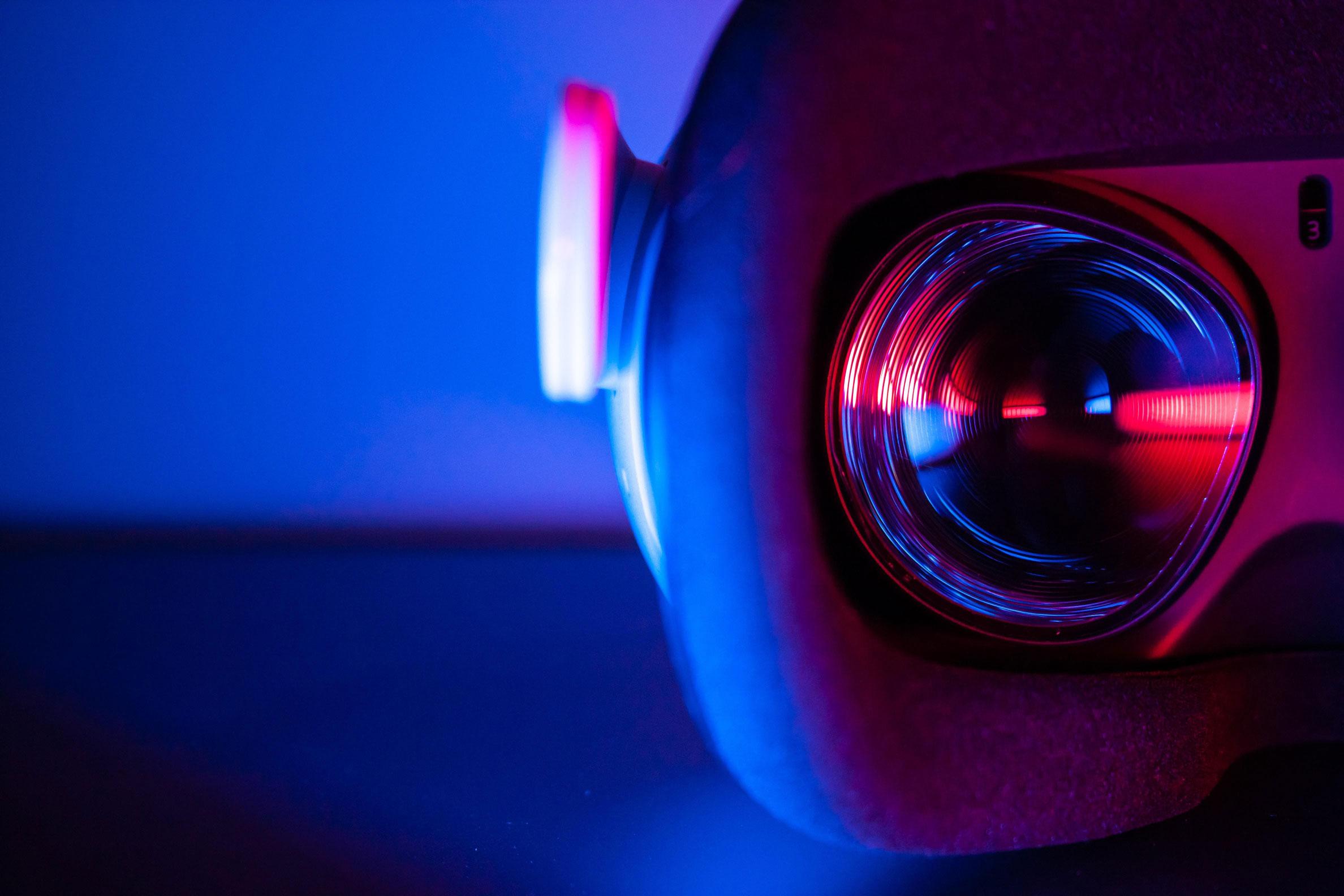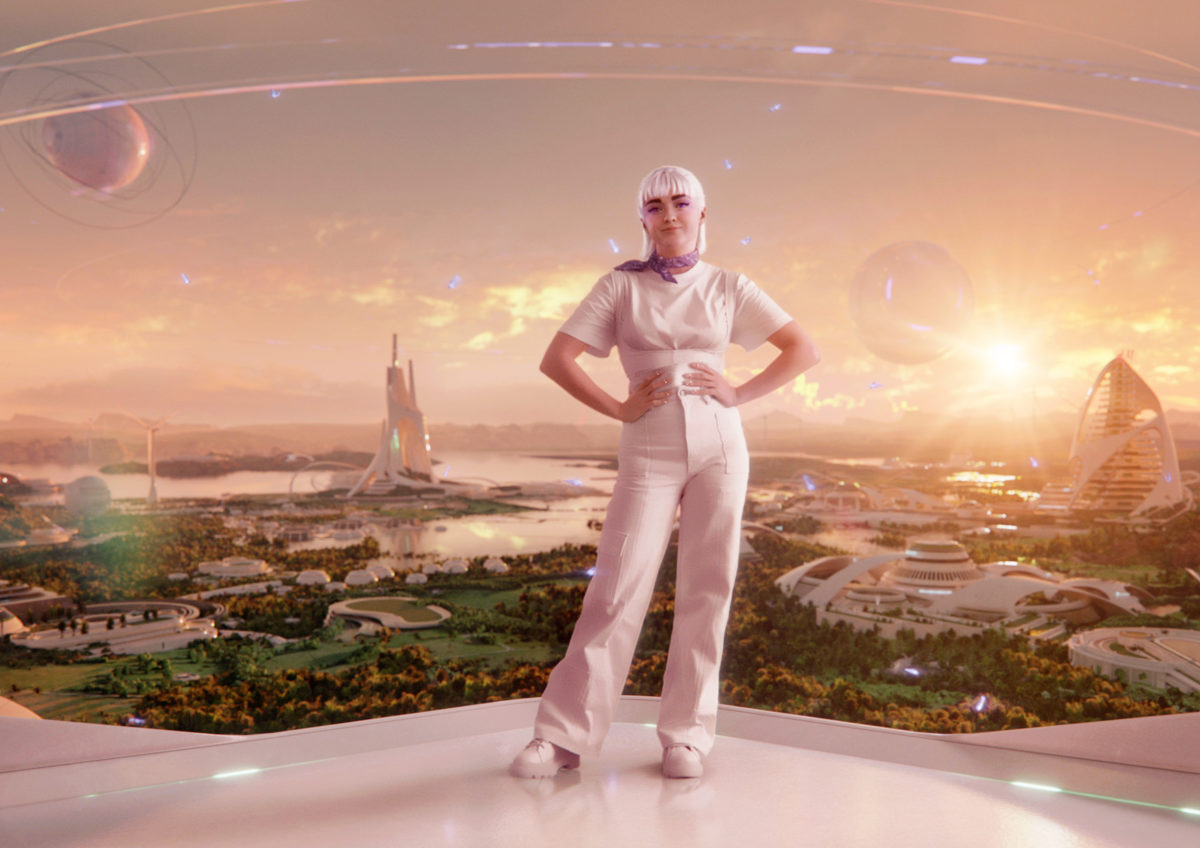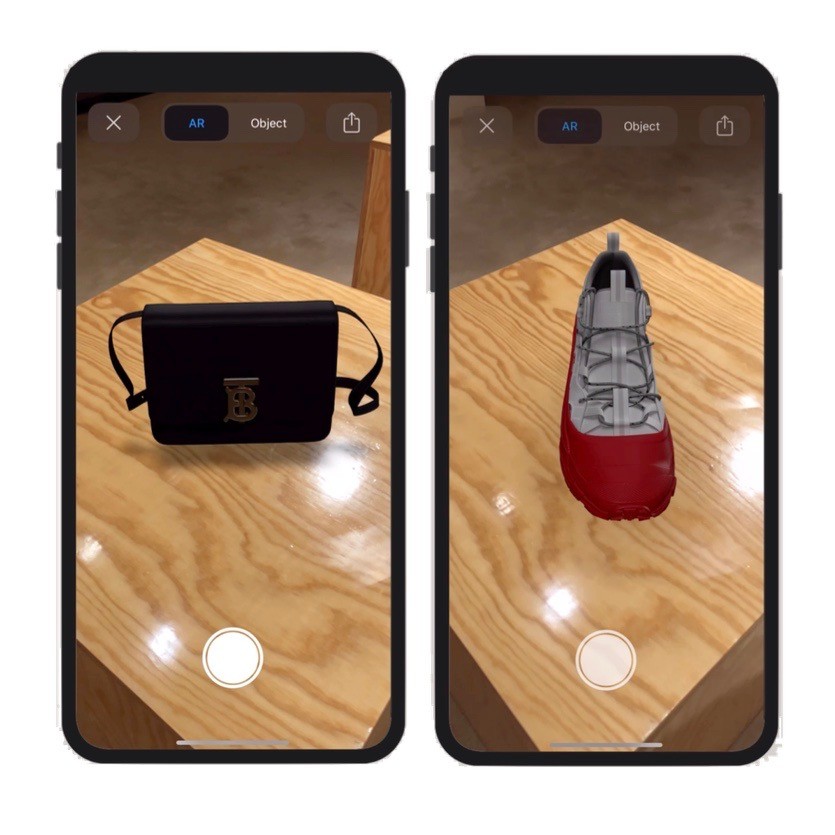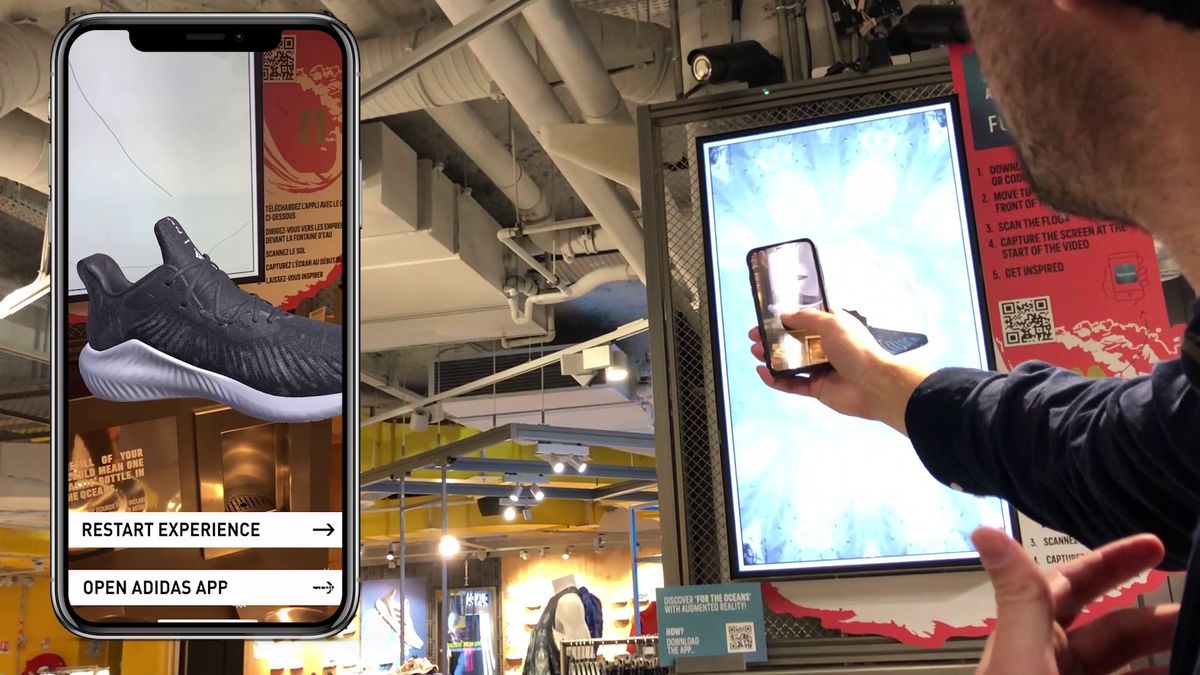
While people like the idea of utilizing augmented reality to shop for new items, the question is whether it can produce concrete commercial results for fashion companies.
Customers have a more joyful and engaging shopping experience when augmented reality (AR) technology are integrated into the fashion retail industry. Despite the fact that augmented reality has been available for a few years, it is still a rather fresh approach to exploring and purchasing apparel, jewelry, makeup, and other personal items.
In addition to providing an exceptional shopping experience, merchants may employ augmented reality to promote sales and achieve corporate objectives when leveraged to its full potential. According to a Deloitte survey, 71% of shoppers believe they would likely purchase more regularly if AR-powered apps were available. Furthermore, 40% of buyers said they would pay extra if they could try a product in AR.
To concretely demonstrate the power of augmented reality in fashion retail, I'll share some of the most amazing examples of how fashion firms have integrated AR into their consumers' purchasing experiences.
What role does augmented reality play in the fashion industry?
To begin, what exactly is augmented reality? Augmented reality is a technology that uses a smartphone or other enabled electronic device to superimpose virtual content on the real world surroundings.
What exactly is augmented reality? When you launch your smartphone's camera to capture a photo or record a video, an AR tool inserts a virtual object into the frame that does not exist in the physical surroundings. This results in an experience in which digital things coexist with their device's camera-captured real-world environment.
Although the phrases augmented reality (AR) and virtual reality (VR) are frequently used interchangeably, these two technologies are distinct. Virtual reality creates computer-generated content that people view through a headset without the real-world visual overlay.
Augmented reality is mostly used in fashion retail in the form of Virtual Try-On (VTO). Retail firms use virtual try-on to allow customers to digitally try on clothes, accessories, and makeup, among other personal effects.
VTO uses AR technology to superimpose a virtual depiction of a product over a customer's photograph, allowing them to see how the things would fit or look on them. They can also be used as filters to behave as virtual apparel, as popularized by social media platforms.
Retailers provide VTO in two ways, as seen in the examples below:
- Customers access the retailer's AR-enabled digital platform via a personal device (e.g., smartphone, tablet, desktop, or laptop) via an app or a web browser, which also needs the use of the device's camera.
- Customers can use digital mirrors and smart screens to access augmented reality through a virtual fitting room.
What are the best instances of augmented reality in fashion?
Let me provide great examples of how brands have used augmented reality and virtual try-ons for their customers to help you better grasp how they function.
1. H&M: Dress for success in the metaverse
H&M launched its first virtual clothing collection in January 2022 by holding a competition in which users were urged to suggest original and imaginative names for the highlighted styles.
These virtual clothing were only available as competition prizes and were never made or sold in stores. Winners were able to "try on" the virtual pieces by uploading a photo of themselves, which was subsequently turned into an animated image that could be shared on social media platforms by 3D graphic artists.

H&M has the ability to better connect and interact with customers, as well as explore more creative and exciting pathways, with the emergence of new technology paired with gamification.
From casual T-shirts to magnificent ball gowns, digital fashion encompasses the complete spectrum of conventional fashion. These clothing, however, are neither physically made or palpable in any normal sense. They are instead created with advanced 3D and animation design software, allowing people to "wear" these digital clothes through gaming avatars, augmented reality experiences, or digitally manipulated images.
2. Burberry: Using augmented reality to enhance the brand experience
Burberry is one of the fashion industry's most bullish on augmented reality retailers. They've implemented augmented reality into numerous web platforms and are continuing to experiment with it in their global campaigns.
Their relationship with Google cleverly brought the in-store buying experience directly to the digital gadgets of internet shoppers. Customers who searched for Black TB bag and Arthur Check Sneaker on Google, for example, were able to view these products in 3D.

Burberry previously exclusively provided 3D photos of their products via their website and app. The collaboration with Google increased them exposure to prospective new clients.
Furthermore, the solution not only boosted personalized luxury commerce and produced a more connected experience, but it also assisted in managing customers' expectations regarding their purchases. This provided buyers with a more realistic image of things before purchasing, removing the need to go to the store and physically contact with the item, potentially reducing the possibility of returns.
AR for brand awareness
AR in fashion retail does not have to rely on making an immediate sale to generate brand hype. Burberry has used augmented reality in a number of global campaigns to engage with their target demographic.
Burberry, for example, worked with artist Danny Sangra to produce 'Burberry-inspired' paintings for a specific AR component in their iOS app. The software incorporated an ecommerce store as well as interactive brand features. Users could utilize the AR component to adorn their surroundings in real time by superimposing Danny Sangra's images on their photos. Users could then share the photographs on social media, helping the brand raise its reputation even further, particularly among art enthusiasts.
AR proves its worth in the world of luxury buying.
Burberry gained a competitive advantage by incorporating augmented reality into their marketing activities. Previously, upmarket firms relied on internet to sell low to mid-range luxury items. They did not consider online channels to be appropriate for high-end brand sales, believing that clients could only enjoy individualized experiences in brick-and-mortar locations.
Burberry introduced its high-end customers to a new digital realm, and they eagerly accepted. According to a McKinsey estimate, one in every five luxury purchases would be made online by 2025, with premium customers eagerly adopting the digital lifestyle. Furthermore, about 80% of luxury sales are now impacted by internet platforms.
3. Zalando: Test Drive
Zalando, Germany's top online fashion shop, has launched a new virtual dressing application called "Try On" on Snapchat. Users may digitally try on selected products from Zalando's own brands, including Even & Odd, Zign, and Your Turn, by employing AR technology via Snapchat's Lenses.
Snapchat users simply take a full-body shot and upload it to the app to activate the function. They can then select a garment from the list, and the application will effortlessly merge it into the photo. Any overlapping clothes is intelligently removed by the technology, resulting in a realistic portrayal. This feature allows users to decide whether the item fits them and allows them to share the photo with friends to get feedback.
Zalando has collaborated on two successful campaigns with Puma, a sportswear company, and its private label Anna Field. During these campaigns, nearly 30,000 clients across the two product lines used the technology.

"The goal of these pilot campaigns is to learn and understand how customers interact with this new technology in order to develop a seamless, scalable solution for the future." "We already see an increase in customer engagement with those campaigns, and nearly half of customers try more than one size on the avatar," said Stacia Carr, Zalando's vice president of size and fit.
4. Lily: Virtual fitting room in venues other than stores
Lily, a Chinese womenswear brand, deployed two smart mirrors powered by VTO at a Shanghai metro station for a pop-up campaign. Passing commuters could virtually try on the brand's items in real time using these interactive panels.
People were urged to take a selfie and enter their height and weight on the screen. The AR technology then superimposes digital apparel on their image to show how they would look in their chosen outfit. If customers are satisfied with their appearance, the smart mirror may generate a QR code that allows them to download their image to their mobile phone.
The campaign provided a totally immersive experience to everyone passing by by setting up a virtual try-on experience in a non-store location with substantial foot traffic. Through this virtual fitting room pop-up experience, it also provided a practical way for potential customers to discover their inventory.
5. Fendi: Keeping in touch with loyal customers
Despite the pandemic lockdown, Fendi's devoted customers spoke with their client advisors using Whatsapp and other chat services. Customers wanted to check what was offered at the stores they used to frequent. Despite the fact that the products were previously available online, they treasured the physical shopping experience, as well as the ties they'd formed with their client advisors.
As a result, Fendi sought to reproduce the sensory and emotional experience of in-store purchasing by implementing virtual changing rooms similar to video conferencing technologies. Some of their in-store changing rooms now include customized and high-quality cameras. Unlike normal cameras, these can catch the true rendering of colors for buyers to better perceive the merchandise, imitating the shopping experience they are used to.
The client connects virtually to advisers or sales personnel within Fendi's custom-built dressing rooms during the virtual meeting. The advisors interact with the clients via live video, even fitting the garments in front of the client. The advisors also encourage clients to ask their friends to join the virtual fitting experience from wherever they are, simulating an in-store buying experience in which friends indicate what they like and dislike.
Fendi developed an AR-enabled styling tool as part of this technology, allowing client advisers to generate numerous styles for the client, which they can examine at home to assist them choose the proper product. Fendi also developed a broadcasting system that allows the advisers to incorporate digital content during the live fitting. It simulated a live TV broadcasting experience that was simple to understand and deploy from the client advisors' perspective as users.
6. Adidas: Highlighting sustainability with AR
Adidas is also one of the top fashion brands enthusiastic about using and experimenting with VTO. For example, in 2019, Adidas introduced a footwear try-on through their iOS app (and being available on Android later on), which let customers virtually wear some of their most iconic models and a select collection of running shoes.
While the AR functionality couldn't account yet for exact sizes, it showed customers how the shoes look in real life on their feet prior to committing to a purchase. This is probably the use case closest to social media AR filters.

The sportswear company has also used augmented reality in a number of pop-up advertisements, primarily to showcase its environmental activities. Adidas, for example, held a gamified mobile AR experience at their main shop in Paris to demonstrate how they converted recycled plastic into footwear.
They placed QR tags on retail windows as trigger points for an AR experience in a 2021 campaign with The Athlete's Foot in multiple cities in Europe. Passing shoppers may scan the QR code with their phones to launch an AR-powered digital environment without downloading an app. It employed a virtual tornado to emphasize the environmentally friendly materials used in Adidas Stan Smith shoes.
How might augmented reality improve client loyalty?
In retail, augmented reality improves the buying experience by allowing buyers to visually try on products and envision them in their surroundings, eliminating purchase uncertainty and enhancing pleasure. Because AR is personalized and interactive, it builds a greater emotional connection between customers and brands, resulting in enhanced loyalty.
Personalization and customization: AR technology can personalize the shopping experience by providing customised recommendations and suggestions based on previous purchases and customer preferences. Retailers may strengthen the emotional tie between the customer and the brand by offering personalized and customized solutions. Customers' loyalty can be increased through interacting with them.
Reduced purchase uncertainty: AR allows shoppers to preview products before purchasing them. They can see how their furniture fits in their home, how their apparel looks on their body, and how their makeup looks on their face. AR builds trust and loyalty by decreasing purchasing uncertainty and assisting customers in making more informed selections.
Gamification and rewards: Retailers can include gamification features such as virtual scavenger hunts, interactive quizzes, or digital awards into AR experiences. AR-based gamification fosters repeat visits, engagement, and loyalty by incorporating a fun aspect and offering incentives. Furthermore, when customers have excellent AR experiences, they are more likely to share their experiences on social media, boosting word-of-mouth promotion and enticing new customers while strengthening existing ones' loyalty.
Social networking and word-of-mouth marketing: AR experiences can be aesthetically stunning and easily shared on social media networks. Customers that have excellent experiences with AR in retail are more likely to tell their friends and followers about their experiences, increasing brand visibility and potentially recruiting new customers.
Channel integration that is seamless: AR has the potential to bridge the gap between physical and digital retail experiences. Retailers establish a holistic consumer journey that encourages loyalty by providing a seamless and integrated buying experience by offering consistent AR features across online and offline channels.
AR has the potential to bridge the gap between physical and digital retail experiences.
Retailers establish a holistic consumer journey that encourages loyalty by providing a seamless and integrated buying experience by offering consistent AR features across online and offline channels.
Give customers an immersive experience.
Fashion stores use AR technologies to provide shoppers with an immersive experience, allowing them to try on garments, apparel, and accessories in a fun and engaging way. It can force people to step outside of their comfort zone by exposing them to new fashion trends or looks they may not have considered before. Furthermore, shops can use AR to deliver hyper-personalized experiences for their customers, such as personalised recommendations based on their physical characteristics, preferences, or previous purchases.
Boost your revenue by fueling your sales funnel.
Customers who use augmented reality apps are 19.8% more likely to purchase than those who do not. Augmented reality, when used effectively within your sales funnel, can enhance retail sales by guiding clients from curiosity to purchase. Furthermore, immersive technologies such as AR try-on make shopping more efficient because shoppers can easily navigate between products, whether in-store or online.
Reduce product returns
Because AR allows clients to virtually try on clothing before purchasing it, they can be more confident that the clothes meet their tastes and fit well. Customers making more informed judgments may minimize return rates. Finally, this assists stores in lowering return-related costs.
Increase brand awareness
AR is a potent tool for generating excitement and serving as a focal point for social sharing. Prospective clients perceive your creativity and innovation even before they walk into your store or log into your online store. Customers are more likely to make a purchase when they have had positive encounters with the brand early in their buying journey, which can lead to increased sales and brand loyalty.
Is augmented reality a game changer or a marketing ploy?
Virtual reality is used by high street and luxury brands in a variety of ways, from allowing customers to try on physical items and encouraging unique user-generated content for brand promotion, to encouraging creativity to play with different products and simplifying the shopping experience by allowing customers to skip queues.
Overall, augmented reality in fashion has enormous potential for both retailers and customers. Retailers can provide a delightful shopping experience to customers by fully utilizing AR and VTO, which has shown to generate sales and deliver business results.
I recommend reading Netguru's research, Virtual Try-On: Game Changer or Hype, for an in-depth analysis of the merits and cons of virtual try-on apps. This might assist you in determining whether VTO is a useful feature for your digital channels, including your ecommerce platform.
Let's Get to Work.
Have an unsolvable problem or audacious idea?
